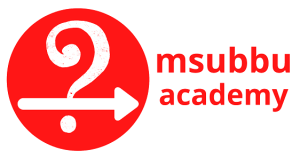Ctrl-Class-2-Summary
05-Aug-2025
Open Loop Response
Quick Recap
The meeting focused on teaching process control concepts, including deviation variables, transfer functions, and system dynamics through detailed explanations and examples of various control systems. MSubbu demonstrated practical applications of these concepts by solving problems involving thermocouples, level systems, and temperature responses, while also covering advanced topics like inverse response and system approximation methods.
Next Steps
- Students: Prepare for the next class on closed-loop systems.
- Students: Understand transfer functions and Laplace transformations for deviation variables.
- Students: Learn how to convert differential equations into transfer functions using Laplace transformations.
- Students: Memorize the first-order system response formula for step input.
- Students: Study the formulas for percentage overshoot, decay ratio, and period of oscillation for second-order systems.
- Students: Understand first-order, second-order, and higher-order systems.
- Students: Review how to approximate higher-order systems as first-order plus dead time systems.
- Students: Understand inverse response systems and their characteristics.
- Students: Learn how to identify systems with inverse response by checking for positive zeros in transfer functions.
- Students: Review the Taylor Series approximation for dead time systems.
- Students: Study the modeling aspects of developing unsteady models for processes.
- Students: Study the transfer function models for first-order systems, particularly thermocouple and level system examples.
- Students: Practice solving problems related to inverse response systems.
- Students: Read the Seborg book its solution manual for additional reference.
- Third-year students: Attend the remaining classes as they will focus on closed-loop systems and mathematics rather than process modeling.
SUMMARY
Process Control Concepts
The meeting focused on process control and its application in chemical engineering. MSubbu explained the concept of deviation variables and their use in simplifying differential equations through Laplace transformations. The discussion also covered the importance of steady-state conditions and how they relate to transfer functions in process control systems.
Thermocouple Transfer Function Analysis
MSubbu explained the process of deriving the transfer function for a thermocouple using the lumped capacity method and energy balance. He demonstrated how to solve for the time constant and temperature response to a step input. MSubbu also covered how to handle ramp and impulse inputs by integrating or differentiating the step response. He emphasized that for first-order systems, it's sufficient to know the response to a step input, as other inputs can be derived from it. MSubbu concluded by solving a problem involving a thermometer experiencing two step changes in temperature and explained how to use the transfer function to find the temperature at specific times.
Level System Dynamics and Transfer Functions
The discussion focused on the dynamics and transfer function of a level system, where the parameters \(K_p\) and \(\tau_p\) need to be reported. MSubbu explained how to derive these values from the given system characteristics, including the relationship between outflow and head, and the steady-state conditions. They discussed the use of deviation variables and Laplace transforms to model the system's response to changes in inflow. The \(\tau_p\) value was determined to be the product of the cross-sectional area and resistance, while \(K_p\) was found to be equal to the resistance. The discussion also included calculating the head value at a specific time after a change in inflow.
Second-Order System Analysis Overview
MSubbu explained the standard results for a second-order system, focusing on how to calculate overshoot, oscillation, and decay ratio. He demonstrated the process of converting a transfer function into standard second-order form and using the final value theorem to find the ultimate value of the system's output. MSubbu also covered how to calculate the maximum value of the output using the overshoot formula and explained the concept of the decay ratio. He concluded by instructing the audience to practice the problem he had presented to better understand the concepts.
Process Modeling and Response Analysis
MSubbu discussed modeling a process where a step change in flow rate from 500 to 520 liters per minute was introduced at 3:05, resulting in a temperature change. The response showed a dead time of 3 minutes, and the system was modeled as a first-order system with dead time. MSubbu calculated the process gain (Kp) as 4.7 and estimated the time constant (\(\tau\)) to be approximately 26 minutes based on the system reaching 99.3% completion of response.
Approximating Higher Order Systems
MSubbu explained how to approximate higher order systems as first-order plus dead time systems, focusing on empirical modeling and transfer function forms. He demonstrated the process of converting a fourth-order system into a simplified first-order plus dead time model by grouping smaller time constants as dead time and using Taylor series approximation. MSubbu emphasized the importance of ensuring time constants are normalized to one before conversion and highlighted that this approximation is useful for stability analysis and reporting results.
Inverse Response in Control Systems
MSubbu explained the concept of inverse response in control systems, which occurs when a system's output initially increases and then decreases before settling at a steady value. He described how to identify inverse response by converting a system's transfer function to pole-zero form and checking for positive zeros, which indicate the presence of inverse response. MSubbu also discussed how inverse response can make systems difficult to control and provided examples to illustrate these concepts.
